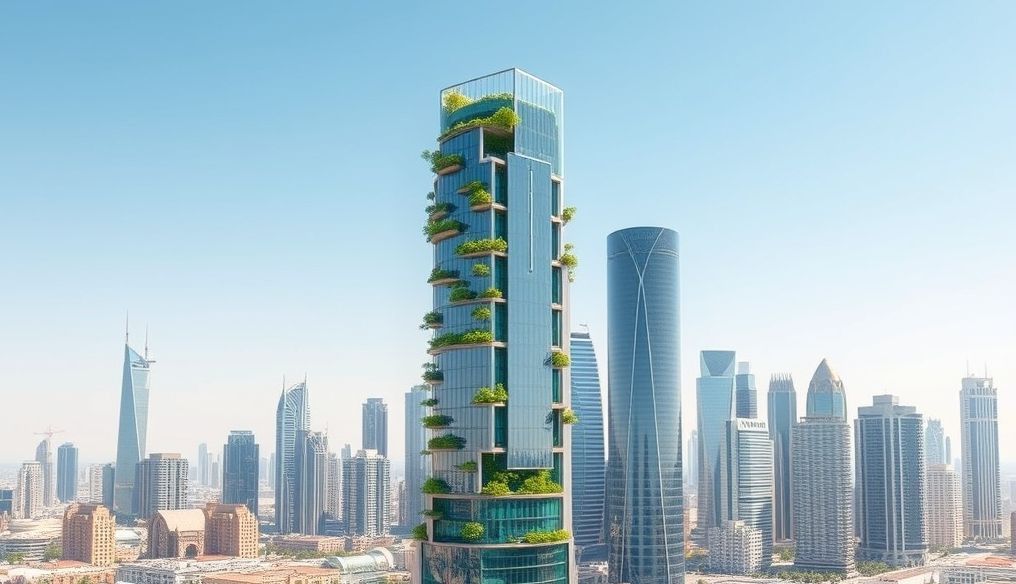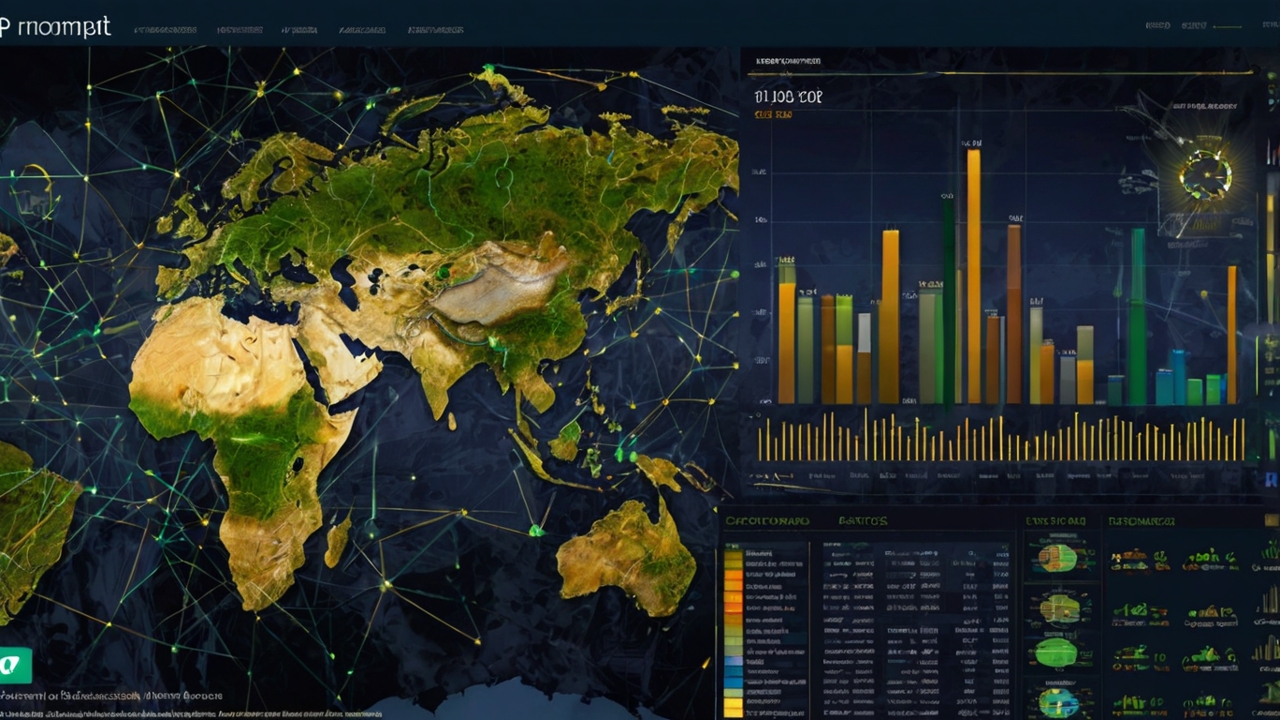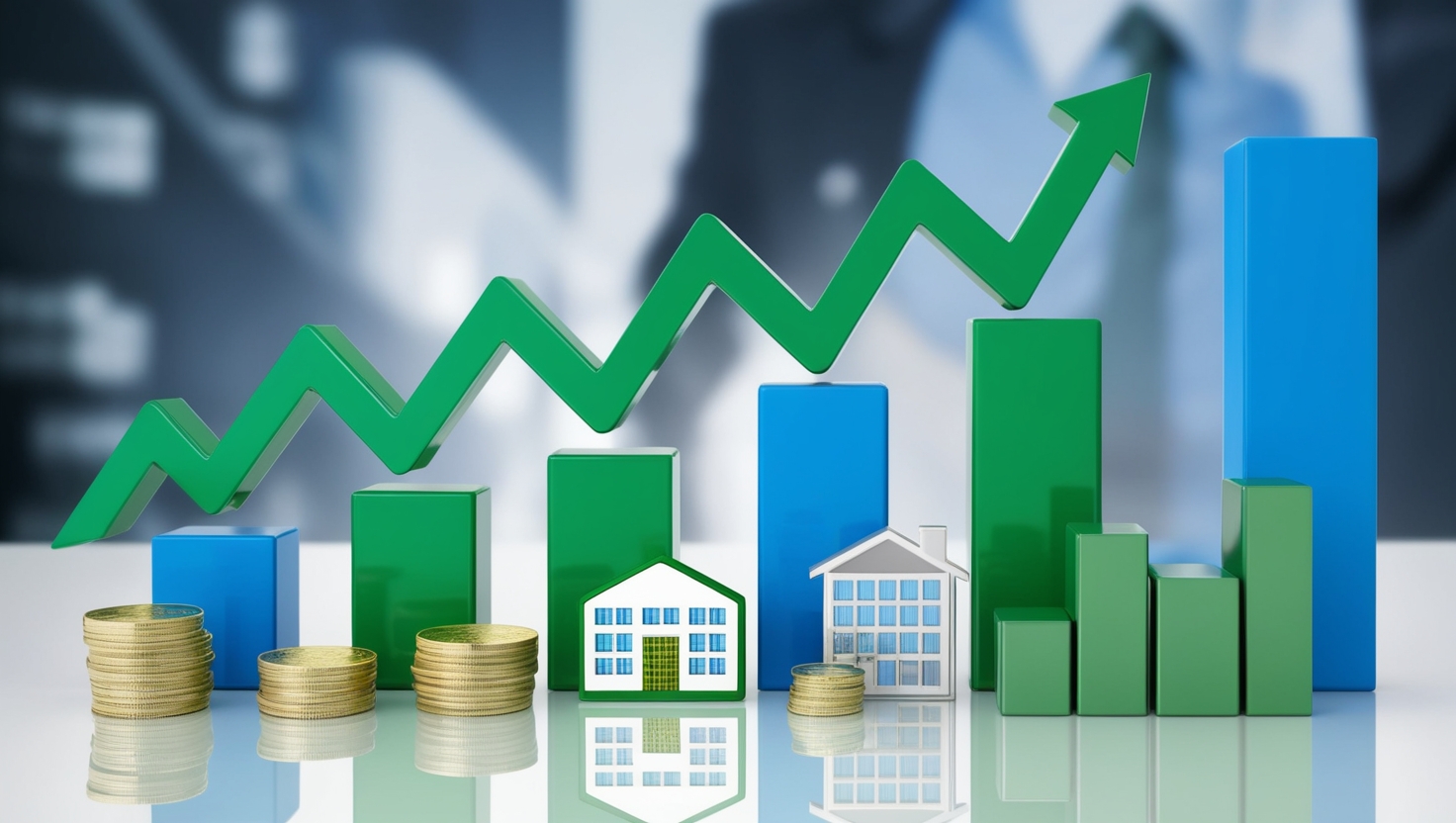Sustainable Real Estate Investment in the Gulf: Green Growth Opportunities and Long-Term Returns
The real estate sector in the Gulf countries is undergoing a significant transformation towards sustainability, driven by ambitious government visions for economic diversification and reduced dependence on oil, as well as increasing environmental awareness among investors and consumers. This shift creates promising investment opportunities that generate long-term returns while contributing to sustainable development goals.
Chapter 1: Drivers of the Shift Towards Sustainability in the Gulf Real Estate Sector
Several factors are driving the adoption of sustainability practices in the Gulf real estate sector, including:
- Government Visions: Gulf countries are adopting long-term strategic visions focused on economic diversification and sustainability, such as Saudi Vision 2030 and UAE Vision 2071. These visions include ambitious goals to reduce carbon emissions and increase reliance on renewable energy, directly impacting the real estate sector.
- Increasing Environmental Awareness: Consumers and investors are increasingly aware of the importance of sustainability and its impact on the environment and society. Consumers are looking for eco-friendly properties that reduce energy and water consumption and provide a healthy living environment.
- International Pressure: Gulf countries face increasing international pressure to reduce carbon emissions and comply with international climate agreements.
- Economic Benefits: Investing in sustainable real estate can lead to significant economic benefits, such as reduced operating costs, increased property values, and attracting investors and companies interested in sustainability.
Chapter 2: Defining Sustainable Real Estate and its Components
Sustainable real estate is designed, built, and operated in a way that minimizes its negative impact on the environment and society. Components of sustainable real estate include:
- Energy-Efficient Design: Using heat-insulating building materials, energy-efficient air conditioning and cooling systems, and LED lighting.
- Water Conservation: Using water-saving technologies in bathrooms, kitchens, and gardens, such as rainwater harvesting systems and greywater reuse.
- Environmentally Friendly Building Materials: Using recycled or recyclable and low-carbon building materials.
- Renewable Energy: Installing solar panels to generate electricity and using solar water heaters.
- Waste Management: Providing systems for sorting and recycling waste.
- Green Spaces: Providing green spaces inside and around buildings to improve air quality and provide a comfortable environment for residents.
Chapter 3: Types of Sustainable Real Estate Investments in the Gulf
Sustainable real estate investments in the Gulf are diverse and include:
- Sustainable Residential Buildings: Developing eco-friendly residential complexes that meet the needs of residents and provide a healthy and comfortable living environment.
- Sustainable Commercial Buildings: Building eco-friendly offices, shopping centers, and hotels that attract companies and consumers interested in sustainability.
- Sustainable Tourism Projects: Developing eco-friendly resorts and hotels that minimize their impact on the local environment and contribute to preserving cultural heritage.
- Sustainable Industrial Buildings: Building eco-friendly factories and warehouses that reduce energy and water consumption and air pollution.
- Sustainable Infrastructure: Developing eco-friendly transportation, water, and sanitation networks.
Chapter 4: Government Incentives to Support Sustainable Real Estate Investment
Gulf governments offer several incentives to support sustainable real estate investment, such as:
- Tax Exemptions: Providing tax exemptions for developers who adopt sustainability practices in their projects.
- Financial Support: Providing soft loans and grants for sustainable real estate projects.
- Procedural Facilitation: Simplifying government procedures for sustainable real estate projects.
- Training and Qualification: Providing training and qualification programs for engineers, contractors, and workers in the real estate sector on sustainability practices.
- Standards and Certifications: Establishing standards and certifications for sustainable buildings to encourage developers to adopt best practices. For example, LEED (Leadership in Energy and Environmental Design) is a global rating system for green buildings.
Chapter 5: Case Studies of Successful Sustainable Real Estate Projects in the Gulf
There are many successful sustainable real estate projects in the Gulf that can serve as role models. For example:
- Masdar City in Abu Dhabi: A fully sustainable city that relies on renewable energy and aims to achieve zero carbon emissions.
- The Red Sea Project in Saudi Arabia: A luxury tourism project focused on sustainability and preserving the natural environment.
- The Line Project in NEOM: A sustainable futuristic city that relies on renewable energy and smart transportation.
Chapter 6: Challenges Facing Sustainable Real Estate Investment in the Gulf
Despite the promising opportunities, sustainable real estate investment in the Gulf faces some challenges, such as:
- Initial Cost: The initial cost of sustainable real estate projects may be higher than traditional projects.
- Lack of Expertise: There may be a lack of expertise and knowledge of sustainability practices in the real estate sector.
- Regulatory Constraints: There may be regulatory constraints that hinder the development of sustainable real estate projects.
- Climate Change: Gulf countries face significant challenges due to climate change, such as rising temperatures and water scarcity, which increases the importance of investing in sustainable real estate that can adapt to these challenges.
Chapter 7: Evaluating the Long-Term Returns of Sustainable Real Estate Investment
Despite the potential initial cost, sustainable real estate investment can generate significant long-term returns, including:
- Reduced Operating Costs: Using energy and water-saving technologies can significantly reduce operating costs.
- Increased Property Values: Demand for sustainable properties is increasing, leading to higher values.
- Improved Health and Productivity: Sustainable properties provide a healthy and comfortable living and working environment, improving the health and productivity of residents and employees.
- Improved Reputation: Investing in sustainable real estate can help companies and organizations improve their reputation and enhance their social responsibility.
Chapter 8: The Role of Technology in Enhancing Sustainability in the Real Estate Sector
Technology plays a crucial role in enhancing sustainability in the real estate sector, through:
- Building Information Modeling (BIM): Using BIM to design and build buildings efficiently and reduce waste.
- Internet of Things (IoT): Using IoT to monitor and improve energy and water consumption in buildings.
- Artificial Intelligence (AI): Using AI to improve building management and predict maintenance needs.
- 3D Printing: Using 3D printing to build buildings quickly and efficiently using environmentally friendly materials.
Chapter 9: Tips for Investors in Sustainable Real Estate in the Gulf
Here are some tips for investors interested in investing in sustainable real estate in the Gulf:
- Conduct Thorough Research: Before investing, conduct thorough research on the sustainable real estate market in the region and identify promising opportunities.
- Collaborate with Experts: Consult experts in the field of sustainable real estate for advice and guidance.
- Assess Risks: Assess the potential risks of sustainable real estate investment and take necessary measures to mitigate them.
- Focus on Quality: Invest in high-quality sustainable real estate projects that meet market needs and provide added value to investors and consumers.
- Take Advantage of Government Incentives: Take advantage of government incentives available to support sustainable real estate investment.
Chapter 10: The Future of Sustainable Real Estate Investment in the Gulf
The future of sustainable real estate investment in the Gulf looks promising, driven by ambitious government visions, increasing environmental awareness, and potential economic benefits. The sector is expected to experience significant growth in the coming years, providing rewarding investment opportunities for investors seeking long-term returns while contributing to sustainable development goals.
Disclaimer: This article is for informational purposes only and does not constitute investment advice. Investors should consult a qualified financial advisor before making any investment decisions.




